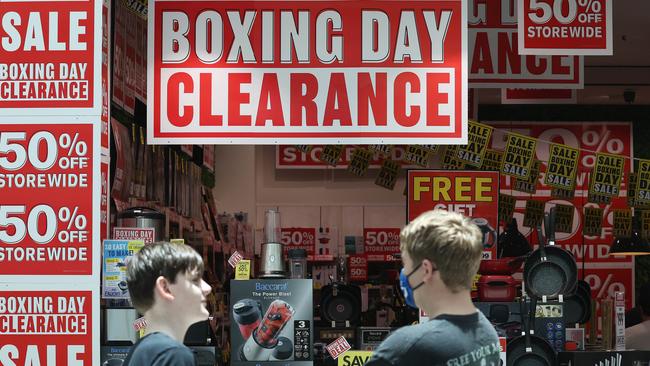
But some of the wider forces behind that drama go much further and will play a big role in 2023 in both the Australia and the US markets.
In Australia, the 2022 December quarter bristled with management traps and shareholders of a number of retailers will discover that their managements made mistakes.
In the current March quarter, Australia will learn whether last year’s warnings by Commonwealth Bank about the looming demand slump in 2023 from over-mortgaged households are correct.
When the Reserve Bank meets next month, it may be too early to determine exactly what happened in January, but the truth will be available by March, albeit not necessarily in the statistics.
The CBA, unlike other banks, believes that the truth will not be pleasant and will halt rate rises after the February interest rate increase. As I explain below, the US faces similar dangers.

One of the hidden reasons Australia avoided a retail slump in the December quarter was the booming gig economy, which provided second sources of income for individuals preparing for the mortgage misery that they could see ahead in 2023.
The gig economy as a second income source will be vital for many households this year, and any attempt by the government to stamp it out will be disastrous for many stretched families.
To understand the retail traps that were set for unwary managers, we first need to go back to what happened a year earlier.
In the September quarter of 2021, life was grim as Covid restrictions slashed retail sales.
But then in the final quarter of 2021, there was a remarkable consumer boom fanned by lower interest rates and almost unlimited bank credit for housing.
It was one of the best retail quarters in recent decades.
In 2021, many retailers struggled to find stock to satisfy demand and were determined not be caught the same way in the December 2022 quarter.
Most discretionary retailers enjoyed strong trading in the September 2022 quarter because the comparable September 2021 quarter had been a disaster.
All were then tempted to project a continuation of the momentum in the 2022 December quarter.
But it was a very big ask given the high level set in the boom 2021 December quarter.
Retailers that ordered on the basis of a further rise enjoyed Black Friday, but were nervous as we headed for Christmas and Boxing Day because demand was sluggish and warehouses were jammed.
Indeed some overstocked enterprises had to scramble to find warehouse space and/or prepare to discount heavily.
What was happening in Australia was part of a global drama.
.

For the last six months, the statistics that have come out of the US have not clearly documented the extent of the real American trading fall.
While American demand for Chinese goods has been impacted by the desire of Americans to be more self-sufficient, the Chinese began to realise the US local sourcing desire was being overwhelmed by reduction in total US demand.
In addition, the problems in Europe have also slashed demand for Chinese goods.
In combination, the US and European demand falls have caused the price of containers to slump by almost 90 per cent – an unprecedented decrease in such a short time.
That’s great news for Australian importers, but the real magnitude of the US decline is starting to be understood by sharemarkets and will dominate economic considerations in 2023.
Chinese factories are being hit by the combination of lower export demand and local Covid impacts.
In calculating their orders for the December 2022 quarter, retailers around the world (including in Australia) remembered the shortages of a year earlier and allowed for “normal” delays in deliveries from China.

Instead the goods from China came quickly.
Those retailers with modern systems and a deep understanding of their customers plus good contacts in China did not over-order and are travelling well, provided they have been able to the overcome staff shortages that have plagued all retailers.
In both the US and in Australia, retailers and cafes must compete for labour with government handouts for young workers who have discovered how to manage on low government income during the Covid period.
In Australia, retailers with stock problems brought forward their Boxing Day sales and were heavy-handed in their discounts.
The size of the discounts stimulated some highly-mortgaged consumers to buy more goods than was wise.
But the discounts were a delight for the large number of consumers who are not saddled with big mortgages and saw huge price reductions at a time when 2023 prices look set to rise.
And they were comforted that they will not need to reduce their 2023 spending unless their overall wealth is substantially reduced by a global sharemarket/and or a major residential property setback.
In the US, there is danger that the current market downturn will be multiplied by revelations of big losses in the capital and banking communities led by banks that backed cryptocurrency traders and Elon Musk’s Twitter acquisition.
Australia doesn’t have those problems, but we do need strong performances from our minerals and farms to offset what will be a tough time in the mortgage belt.
At this very sensitive time, Australia has decided that it should attack its mineral industry and to make more complex its industrial relations.
The impact of those moves are yet to be fully documented.





Behind the massive price cuts that drove the Boxing Day retail boom was an intense drama for many overstocked Australian discretionary retailers.